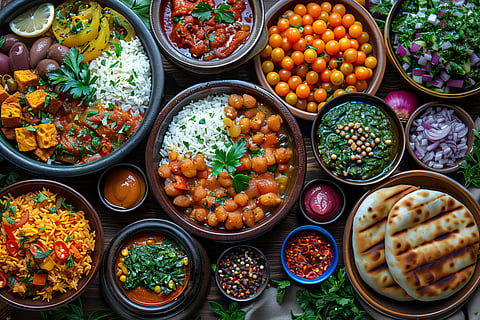

World Wide Fund for Nature (WWF), in its Living Planet Report released on Thursday, highlights the global demand for food production by 2050.
Indian eating pattern is the most climate-friendly among G-20 nations
Argentina, Australia, and the United States have the least sustainable patterns.
Indian food consumption patterns require less than one Earth to sustain food needs.
Most countries focus on developing and promoting healthy alternative protein sources such as legumes, nutri-cereals, plant-based meat alternatives, and algal species high in nutritional value. These efforts require finances. The availability and affordability add to their burden of depleting resources in countries where resources are already limited.
Local cultural traditions, individual choices, and available food heavily influence the success of healthy and nutritious diets.
Argentina is at the bottom with food consumption and would require 7.4 Earths. Australia and the USA are the next worst in line. Indonesia and China fared well. However, India occupied the top slot with the most climate-friendly food system.
Eating more sustainable diets would reduce the land needed for food production.
The National Millet Campaign of India promotes the consumption of this ancient grain. Good for health and resources, and highly resilient in the face of climate change,
Millets are short-duration crops and require 60 to 90 days to mature. They are efficient in using available nutrients and respond well to improving farm conditions.
Millets are resilient to climate change and can survive and thrive in a variety of ecological conditions, from rain-fed to arid climates. They consume minimal resources for growing water, fertilizers and pesticides. With the growing population and changing climate growing millets provides food security.
Millets provide both food and fodder. They are a source of minerals like iron, zinc and calcium and also have a low glycemic index. A low glycemic index reduces the disease burden. The high fiber content causes hunger satisfaction and reduces obesity. Obesity is a cause of many diseases like diabetes and cardiovascular disease.
Overconsumption of fats and sugars leads to an obesity epidemic. The World WWF reports 2.5 billion adults as overweight, including 890 million who are obese. Providing healthy and nutritious food to this population will require a dietary shift- to plant-based foods and fewer animal products. Contrary to the same countries with the burden of undernutrition, hunger and food insecurity require nutritious diets and animal source foods.
References:
1. Lang, Tim, and David Barling. “Food Security and Food Sustainability: Reformulating the Debate.” The Geographical Journal 178, no. 4 (December 2012): 313–26. https://doi.org/10.1111/j.1475-4959.2012.00480.x.
2. Salis, Sheryl, Anju Virmani, Leena Priyambada, Meena Mohan, Kajal Hansda, and Carine de Beaufort. “‘Old Is Gold’: How Traditional Indian Dietary Practices Can Support Pediatric Diabetes Management.” Nutrients 13, no. 12 (December 2021): 4427. https://doi.org/10.3390/nu13124427.
(Input From Various Sources)
(Rehash/Dr. Swati Sharma/)
